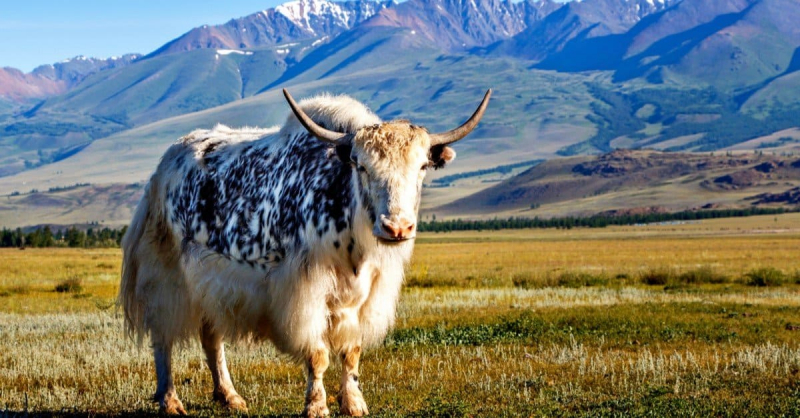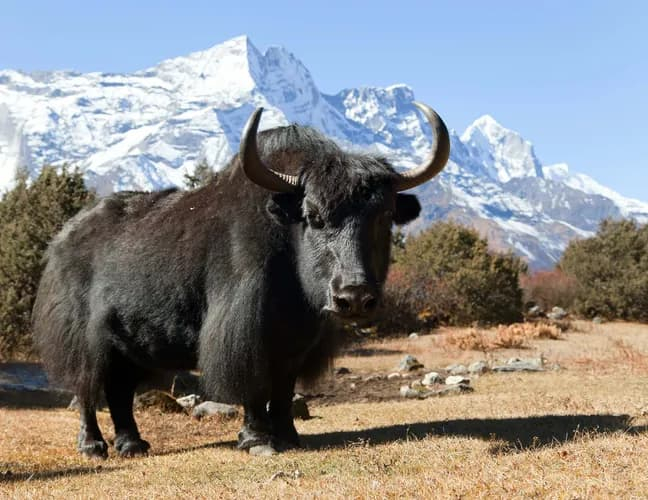Yak

Yaks can survive at altitudes of up to 20,000 feet. The yak's large tongue aids in the removal of moss and lichen from uneven surfaces. While there are not many nutrients in the diet that the yak consumes, they have a rumen. Chewing their cud, like a cow, helps them get more nutrients out of the available food. The yak has a very sizable rumen. Because of this, they are able to consume more food at once and wait to eat it. Yaks have considerably lengthy intestines than most animals do. As a result, their food stays in their body longer, allowing them to absorb more nutrients from it.
The hearts and lungs of yaks are also larger than those of other cattle. Additionally, their blood cell count is higher. All of these cool adaptations let the animal maintain blood flow even in subfreezing conditions, allowing its body to utilize oxygen more effectively. Yaks have extremely dense coats, just like many other highland animals. Since its coat is water-resistant, the animal can stay warmer. It also has large hooves that are made for walking in slippery and snowy conditions. As a result, the yak migrates to lower elevations with ease throughout the winter.











